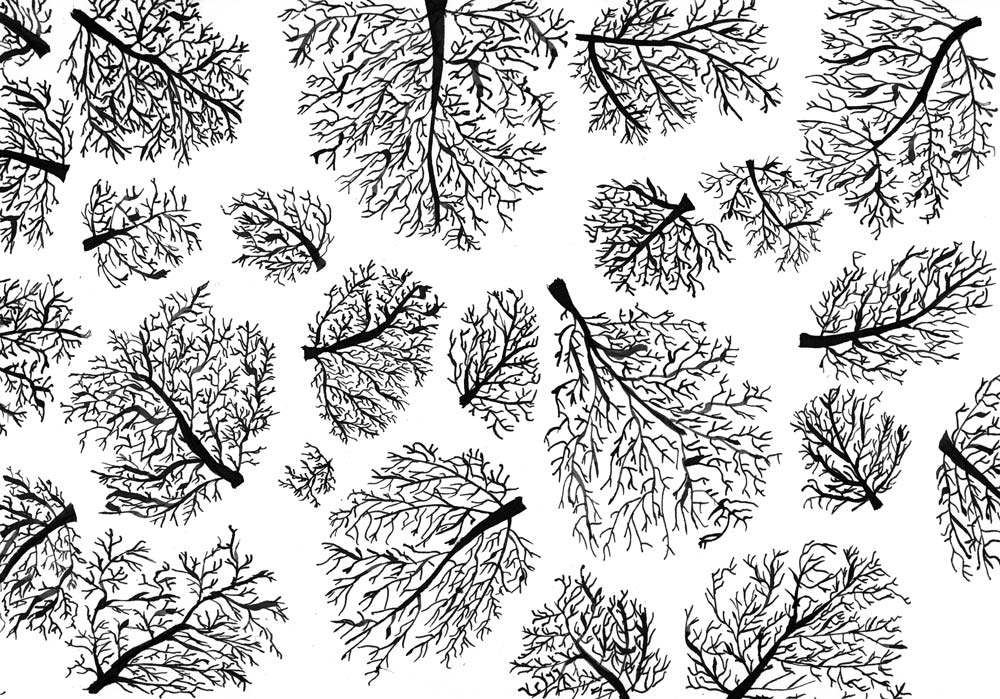R. J. Agius meets up with Prof. Alan Deidun to discuss a recent discovery of a smooth Black Coral underwater forest.
The saying that mankind knows more about space than about the oceans may be clichéd but it does in fact hold a lot of water. While new discoveries are being made all the time—nightmare fish are found kilometres below the surface, the graveyard of ocean giants—it is easy to forget that our own backyard can hold its peculiar secrets too.
Off the southern coast of Malta, Prof. Alan Deidun and a team of scientists from Rome and Genova, have discovered a forest of Smooth Black Coral (Leiopathes glaberrima). The impressive coral (cnidarians) grow upright out of the seabed, preferring deep water and low silt levels, and can live as long as 4000 years. Their presence is considered an indicator of stability in deep marine environments.
Home to a vast but fragile ecosystem, finding coral in this area is interesting because Malta’s waters were heavily exploited in the 1980s in a failed commercial exploitation attempt set up by government. The area is still significantly overfished. The first hint of the black coral occurrence was by a fisherman using long-line fishing who showed the finding to the local researchers.
Using a variety of tools to see what was hiding deep below the surface, Deidun and his team wanted to map the ocean floor just south of Filfla. Using a Remotely Operated Vehicle (ROV)—a type of robot—the team collated an array of data with high definition images and videos from a hull-mounted MultiBeam echo-sounder providing sonar feedback. This let them make a detailed map of the ocean floor.
Collecting that data ran into problems. Weather was one obstacle; the study took place in November, when winter and its high winds and rough waters had set in. Getting the ROV down to more than 250m is no mean feat either. ‘The operational costs of surveying with an ROV at such great depths are considerable,’ says Deidun. ‘The available ship time of the research vessel ASTREA was narrow and had to coincide with acceptable sea conditions.’
With some luck the team just managed the ROV survey in between bouts of bad weather. What they discovered was both an exciting scientific find and a stark reminder of what the area stands to lose if it sustains more damage.
The survey discovered three zones at different depths. The biodiversity, hiding so close to our shores, is staggering, with dense outcrops of black coral rubbing aquatic shoulders with soft corals, anemones, sea urchins, crabs, and giant and stalked barnacles. The coral, reaching 100cm in height, also had larger neighbours: forkbeards, boarfish, blackbelly rose fish, a variety of perch species, scorpion fish, and three specimens of the rare Haifa grouper.
The ROV images showed pieces of fishing gear lying about this secret underwater garden. Littering the sea floor are orange cables and limestone blocks that are used to fish for dolphin fish (lampuki) through a complex contraption known as the ‘kannizati’. Long lines were also seen entangled in the upright coral colonies, smothering them, and the skeletons of dead corals often lay nearby, probably because of the damage caused by the fishing gear.
“What they discovered was both an exciting scientific find and a stark reminder of what the area stands to lose if it sustains more damage.”
So what can be done to protect this hidden treasure? The team has proposed the extension of the existing Marine Protected Area between Għar Lapsi and Filfla. It currently spans along the southwest coastline of the island. To protect the coral, this should be extended further offshore and include the deeper waters where this underwater forest has been found.
Extending this protected area demands change. Sea bed (benthic) fishing techniques are the main culprit. Fishing for dolphin fish often ends up with discarded equipment on the seabed. Limestone blocks are attached to cables, which are then used to keep palm frond rafts in place, attracting the fish to shelter beneath them.
The fishing season for the popular fish lasts from mid-August to the end of December. That is a lot of limestone blocks and a lot of cables. This type of fishing ought to be prohibited or at best, regulated, within the extended marine protected area, though fishing off a moving vessel can go on unhindered. The biggest issue now is convincing people that this matters.
Fishing is part of Maltese culture and its economy. For fishermen this is their livelihood. Pushing through restrictions on fishing, and the subsequent loss of profit, will never be an easy task. Prof. Deidun is sadly not optimistic. He calls the five existing marine protected areas ‘toothless tigers’ that exist only on paper. ‘We believe that all these proposed measures will never see the light of day since implementation and enforcement of management measures out at sea are practically non-existent in Maltese waters.’
The current situation, he explains, is due to two main factors. ‘Marine conservation enjoys a very low priority locally, both due to a general lack of appreciation of the living assets held within our waters but also due to the consistent opposition by a number of marine stakeholders (e.g. recreational fishermen) to any change to the status quo.’
The environment has always taken a back burner in local politics. But it is the tireless work of people like Deidun and his colleagues that provides the most compelling evidence for better, data-driven conservation. The field study that revealed the black coral forest was preliminary. More research is needed, both to further map the sea floor in the area as well as to determine just how much damage fishing and discarded gear has on sea life. The presence of black coral is a good sign—it would not thrive in an unstable environment. But humanity’s mark is still clear, our responsibility is to keep the trash from damaging fishermen’s livelihoods and our beautiful sea.•





Comments are closed for this article!